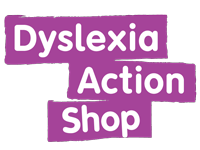This website uses cookies to ensure you get the best experience on our website. About consent.
PPA-Phonological and Print Awareness Scale Product Range
Required qualifications
BA (Hons) / B.Ed Hons or Bsc subjector SENCO
or Working in a school or college and Sector Specific BA (Hons) / B.Ed Hons or Bsc subject
or Psychologist, SaLT or OT
or Professional Body Membership e.g. DA Guild MDG
Measures early literacy skills, specifically phonological and print awareness, and allows examiners to easily track development
(PPA Scale) Phonological and Print Awareness Scale
The Phonological and Print Awareness Scale (PPA Scale) measures early literacy skills in children aged 3.6 to 8.11 years. It is quick and easy to administer, helping to identify children who may benefit from early intervention.
The PPA Scale measures two important literacy skills that have been shown to predict later reading and writing ability:
- Phonological Awareness: The ability to recognize and manipulate the individual sounds of whole words without any reliance on print.
- Print Awareness: Understanding the elements of print, including alphabet knowledge and concepts about print.
A receptive, multiple-choice response format is used where examiners read the instructions and examinees can point to the colorful, self-standing easel to indicate their answer. This format makes the PPA Scale ideal for assessing young children and it's also suitable for use with children who may have speech impairments and/or expressive language difficulties.
This scale includes 69 items, which represent six underlying tasks:
- Rhyming:
- Print Knowledge
- Initial Sound Matching
- Final Sound Matching
- Sound-Symbol
- Phonemic Awareness
The items have been written in a way that provides a narrow focus on phonological and print awareness skills without placing demands of other cognitive abilities such as memory. There are three parallel forms available, allowing examiners to identify areas for intervention and to track progress over time. Scores include a standard score, growth score, percentile ranks and descriptive ranges. The growth score is the best way to measure a child's progress over time. A Descriptive Summary is provided on the Record Form, offering a qualitative way to look at item and task level performance. This summary allows examiners to review the objectives of missed items and identify patterns, which can help identify strengths as well as areas where children may require additional support.
The PPA Scale can be used for:
- Screening to identify children who are behind their peers
- Identifying strengths and areas needed improvement
- Tracking progress over time, using the growth score and parallel forms
- Research exploring the effectiveness of early literacy programmes
Identify Areas for Improvement and Monitor Progress
Three parallel forms (A, B, and C), each with an accompanying easel, allow examiners to identify areas needing improvement and easily track progression of these areas over time.
The PPA Scale provides a standard score for comparing a child’s performance to that of typically developing peers of the same age and a growth score that indicates a child’s progress along the continuum of phonological and print awareness abilities measured by the PPA Scale. The growth score is the best way to measure a child’s development over time. In addition, several other scores are provided: descriptive ranges, confidence interval, percentile rank, and test-age equivalent.
A Descriptive Summary on the Record Form offers a qualitative way to evaluate item- and task-level performance. It allows you to easily review the objectives of missed items and discover patterns, which can help identify areas of strength and those that need improvement.
The examinee’s overall abilities as indicated by the standard score and growth score, and the specific areas needing improvement identified by the Descriptive Summary can help inform a targeted intervention plan. This topic is expanded in the companion resource Building Early Literacy Skills: Phonological and Print Awareness Activities. This book offers age-appropriate intervention strategies to improve all of the skills measured by the PPA Scale and build essential vocabulary and oral language skills.
Standardization and Technical Properties
A nationally representative sample of 1,104 examinees was stratified to match the 2010 U.S. Census data in terms of gender, ethnicity, Hispanic origin, region, and head of household’s education level as an estimation of SES (socioeconomic status). A validation sample of 162 children with a speech, language, or other clinical diagnosis was also collected. Analyses of these samples show that the PPA Scale differentiates typical children from those with a learning disability, reading disorder, developmental delay, autism spectrum disorder, or intellectual disability. In addition, it has high internal consistency, test-retest, and alternate form reliability. Further studies provide evidence of the content, construct, convergent, and discriminate validity of the PPA Scale.
PPA Scale Comprehensive Kit
Includes 25 Form A; 25 Form B; 25 Form C; Easel A; Easel B; Easel C; Manual; Building Early Literacy Skills: Phonological and Print Awareness Activities; all in a sturdy bag.


